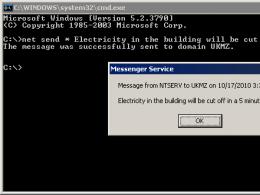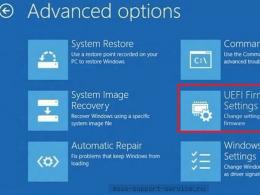Bridge mode between access point and router. Creating a Wireless Wi-Fi Bridge
Wireless Distribution System (WDS) - a technology that allows you to expand the coverage of a wireless network by combining several WiFi hotspots access to a single network without the need for a wired connection between them (which is mandatory in the traditional scheme of building a network). In other words, if you set wifi router, but the Wi-Fi network does not work in some places (rooms or outdoors) or a very weak signal, in such cases it is advisable to install a second router (or access point), which will act as a repeater (repeater) and expand the zone wifi activities. At the same time, thanks to WDS technology, there is no need to pull network cable from the first router, the connection will take place via a Wi-Fi network (it is worth noting that it is pointless to install a second router where a very weak signal is pointless, the second router should be located in the zone of a confident or average Wi-Fi level). In this article, I will describe step by step how to configure 2 TP-Link TL WR841DN routers (for TP-Link TL WR841D router this instruction will also be relevant) to work using WDS technology.
First, let's set up the main router to which the Internet is connected.
Setting up the main router.
We connect to the web interface of the rotator, set up the Internet (if it is not configured), set up a Wi-Fi network, this process is described step by step in the article TP-Link WR841ND firmware update and initial router setup (Internet, Wi-Fi) And aboutb TP-Link WR841N firmware update and initial router setup (Internet, Wi-Fi) .
IN this example I will use the Wi-Fi network name- PK_HELP.COM_TP-LINK, it is also necessary to manually specify Channel, I used 7.

On the menu - Wireless Security, in the PSK password line we write the password, in this case I used www.pk.help.coM.

This completes the settings for the main TP-Link TL WR841DN / TP-Link TL WR841D router. Now you need to connect the Internet to it and proceed to setting up the second router.
Setting up a second router.
Connecting to the web interface of the second router, go to the tab "DHCP" - "Setting DHCP" and disable DHCP server, since the network must have one device "distributing" network settings.

After that we go to "Net"- " The local network" and change the IP address of TP-Link TL WR841DN/ TP-Link TL WR841D to 192.168.0.2 since the network should not have two devices with the same IP addresses (I remind you that the first router has IP 192.168.0.1). After pressing the button "Save" the router will reboot.

The next step is setting up a Wi-Fi network. We write the name of the Wi-Fi network, in this example PK_HELP.COM_TP-LINK-2, in the line Channel set 7 . Put a tick " Enable WDS"and press the button" Search".

You will see the entire list of available WiFi networks, find the previously created PK_HELP.COM_TP-LINK and press the button "Connect".
 As a result, the SSiD and BSSID fields will be automatically filled in, it remains to select the type of security key and enter the password that was used in the main router, in this example, the type is WPA-PSK / WPA2-PSK and the password pk.help.com. We press the button "Save".
As a result, the SSiD and BSSID fields will be automatically filled in, it remains to select the type of security key and enter the password that was used in the main router, in this example, the type is WPA-PSK / WPA2-PSK and the password pk.help.com. We press the button "Save".

The configuration of the second TP-Link TL WR841DN router can be considered completed.
Now it remains to spread these routers and get an extended Wi-Fi network.
In conclusion, I want to add that in this example, TP-Link TL WR841DN / TP-Link TL WR841D routers are used as a special case, on this moment many routers support the WDS function and you can do similar operations with them, the only thing I would like to add is that it is desirable to use routers from the same manufacturer for WDS communication, and ideally the same model.
Contents:
-
- Bridge
- Wireless network setup
- PPPoE
- L2TP
- PPTP
- Connection check
- Repeater modes and access points
- Setting up the ASUS RT-N10 router
One of the main advantages of modern routers is their multitasking. Now it is already difficult to meet separately such devices as a connection point, modem or repeater. Any Wi Fi router supports bridge mode and router mode, can become a connection point or perform the function of a signal repeater.
Router operating modes
According to the method of use, it is customary to distinguish all wireless Wi-Fi devices into the following categories:
1. Bridge
2. Router
3. Hotspot
5. Repeater (repeater).
Bridge
This method is used to combine two networks into one. The connection uses two devices that have this bridge mode. This method is suitable, for example, for connecting two neighboring buildings. Therefore, there is no need to connect them with wires.
Type of work - bridge
router
Most routers work in this mode. It can turn an ISP's IP address into internal addresses, and distribute them among devices within network range. The router can forward ports, open shared access to network printers and file storage.
It can automatically pass authentication so that the user does not perform it every time he tries to access the Internet. In the end, the router in this mode can be used as a normal switch.
Access point, client, repeater
This method is confused with the previous one. Unlike Router-mode, this method of application is simpler and consists only in the fact that the device receives a wired signal and converts it into a wireless one.
 Work type - access point
Work type - access point
The client is the reverse way of functioning. Thus, the wireless signal is received by the device and sent over the wired channel.
 Type of work - "client"
Type of work - "client"
Repeater - this method of application allows you to amplify the signal from the main Wi-Fi device.
 Type of work - repeater
Type of work - repeater
Setting up a wireless network in the Asus RT-N10U model
The RT-N10U supports three usage options: router, repeater and hotspot. First you need to turn on the device and wait until the Wi Fi indicator lights up and connect to the wireless connection that appears. After that, you need to go to the admin panel. To do this, you need to type in the address bar of the browser and go to the address 192.168.1.1, and then enter login and password (admin, admin by default).
 Admin panel login
Admin panel login
In order to protect the router from external interference, you need to change the password for the admin panel. You can do this by going to the tab. Settings\Administration\System. Then enter twice New password and click on the "Apply" button.
Setting up a wireless network
First you need to set up WiFi. To do this, you need to go to the page add. settings\wireless network. Next, be sure to specify the connection parameters:
- SSID - network name
- Authentication method - select WPA-Auto-Personal
- WPA encryption - select Tkip
- Preshared key - you need to specify a key (password) that allows you to get permission to connect.
 WiFi setup
WiFi setup
After the values are set, click the Apply button.
Setting up an internet connection
Now you can start setting up an internet connection. Depending on the Internet connection protocol, there are: PPPoE, L2TP, PPTP. Each protocol has its own differences, therefore, the configuration of the router, depending on the authorization method, is different.
PPPoE
This protocol is mainly used in xDSL technology. Authorization is carried out using the login and password provided by the provider.
Customizable this compound in the following way. You need to go to the WAN / Internet connection tab and set the following settings:
- Connection type: PPPoE
- Get IP automatically
- Username: provided by the provider at the conclusion of the contract
- Password: provided by the provider
- After entering the data, press the "Apply" button.
L2TP
The protocol is used to support VPN. Settings are made in the same tab as for PPPoE:
- WAN connection type: L2TP
- IP and DNS automatic
- Login and password from the contract
- PPTP\L2TP server - here you need to specify the IP address or the name of the vpn server specified in the contract.
PPTP
This protocol provides a secure tunneled connection on a point-to-point basis. Depending on the operator, it is possible to use both static and dynamic IP addresses. The settings look like this:
- WAN type: PPTP
- IP address, subnet mask, default gateway - the values from the contract are entered. If the provider does not allocate a static address, then select "Yes" in the column "Obtain an IP address automatically
 WAN setup page
WAN setup page
- DNS - the addresses of the required provider are entered, if not known, then it is better to leave the automatic selection
- Login and password - from the contract.
After filling in the parameters, you must click the "Apply" button.
Connectivity Check
After filling in the required parameters, select the "network map" tab. If the configuration is correct, then the Internet icon should have the "connected" status.
 Map Page
Map Page
Repeater and access point modes
To change the way the router works to a repeater or a point, go to the Advanced tab. settings\Administration\Operation mode. After selecting the desired option, you need to click on the "apply" button for the changes to take effect. Further settings are made depending on the tasks performed by the router.
Routers very often have to be configured to work as an amplifier or bridge. Therefore, this instruction is suitable for those who are trying to configure Tp-Link to work as a bridge, in WDS mode. Before moving on to the job description process, a clear definition of what a bridge is and how it differs from a repeater should be made.
The issue of repeater mode has already been raised before. It was noted that Tp-Link models this mode missing. For example, Zyxel or Asus have them, there is a separate switch in the settings. In this case, the device works like a real amplifier. For TP Link given function available only at selected access points. In most standard router models, for example, TL-WR941ND, TL-WR740N, TL-WR841N, TL-MR3220, TL-WR842ND, there is only a WDS operation option - a bridge.
The bridge is characterized by connecting a pair of devices through wireless communication. This method can be used if you need to strengthen or expand the Wi-Fi network. The situation can be visualized using the example of a router that distributes a connection. Its network does not cover the entire space, therefore, it needs to be expanded. For this, a second Tp-Link router is used. It is connected and configured according to the instructions below. As a result, it takes over the settings from the main equipment and distributes the network further. The difference from the amplifier will be that with a bridge you will get two wireless networks with independent access parameters.
The method is quite convenient if there is no other possibility for customization. The amplifier is more advantageous as it simply duplicates all the parameters and does not create its own connection. In the case of a bridge, each time you have to choose which of the two networks to connect to.
Sometimes the question arises how to configure tl-wr941nd to receive a wireless connection and then transmit it further via cable. It turns out that the router will be used as a receiver, and is such use of equipment possible?
The answer is simple, when you configure a router over a bridge connection, it will work as a receiver. In this case, you can easily connect a TV, laptop or other equipment through it that does not have its own adapters for connecting via a Wi-Fi network.
What points should be considered?
- For the main router, you can choose a device from any manufacturer. It is desirable that he be alone, but not necessarily. The ideal option is when both routers are of the same model. In the example, the D-link DIR-615/A will be the main one, and the TL-MR3220 model is used for the bridge. It should be noted that not all models can interact correctly. Communication between Asus old version RT-N13U and Tp-Link has not been configured.
- The settings of the main router will also be changed. You will need to specify a static communication channel.
- This method is best suited for wireless communications. As an example of use, we can cite a situation where a main device is installed in one place, and another device is installed in another, which is connected to the main one via Wi-Fi via a bridge.
How to set up a bridge on Tp-Link?
Initially, you need to change the wireless channel of the main unit. It is important that the main router is configured and debugged before starting the procedure. It should broadcast the Wi-Fi connection uninterruptedly. In the example, the main D-link router DIR-615. He should change the communication channel. Perhaps yours will be different. Then, in order to change the channel, you should read the instructions. She talks in detail about this procedure for routers of various brands.
For Tp-Link, this is easy. You should log in to the administration panel at 192.168.1.1 (192.168.0.1). If you can't do it, read the article. Then go to section wireless, You will be interested in the field Channel. It specifies a static channel. This can be a value of 1 or 6. After that, the changes are saved by the button save.

This completes the changes to the settings of the main router. You can close the administration panel.
The second step is to configure the parameters of the router-bridge. In the example, this is the TL-MR3220 model. To perform the procedure, you must log in to the administration panel. If it does not come out, then read,.
In the settings, you should make changes to the ip-address so that there is no conflict between devices if they receive the same values. In such a situation, they will not work. To change the data, open the section network – lan. IP address. It will need to rewrite the value of the last digit of the address to 2. After that, apply the settings using the button Save and reboot your device.

In order to check the new parameters, log in again and make sure that the address is the same as you assigned it.
The third step specifies the network name. To do this, open the section wireless. Find the line in it Wireless Network Name. In it, write the name of the new connection. In line Channel be sure to specify the same channel that was set in the settings of the main router. In the example, the value is 1. Check the checkbox opposite the line Enable WDS Bridging, and click Survey.

In the list that appears, mark the connection with which the connection will be established, and click on Connect.

The fourth step sets the security type. In drop down list key type a value similar to the settings of the first router is selected. Then the field is filled password. This is the access key new network. To apply the settings, press the button Save.

When the settings are saved, reboot. To do this, turn off the power of the box and restart it. Or use the button on the administration page.
The fifth step is to check the parameters. You should go to the router settings again. On the home page admin panel find the section wireless. You will be interested in the line WDS status. Opposite it should be the value run.
If the value is there, then the setting is correct. The router was able to successfully connect to the host device. Now he is ready to distribute the network by wireless connection or cable.
In some situations, ip-addresses must be distributed by the head unit. In order to do this, the DHCP server is disabled on the administration panel of the secondary router. Does it in a tab DHCP, where the value is set opposite the line disable. for the settings to take effect. The save button is pressed.

In conclusion, you should set a complex password for the new wireless network. You can find out how to do this by looking. In the settings, find the tab Wireless — Wireless Security, check the section WPA/WPA2-Personal(Recommended), in line Wireless Password specify keys and save by button Save.
TP-Link's home routers are good because, in addition to the router function itself, they often also have a WDS bridge function. It can be useful in order to receive Internet from another (remote) access point.
Setting up the main router
If you have access to the main router with which you will install the bridge, set the wifi network settings to specific wireless channel number. If auto channel selection is set on it, then communication with the second router may be unstable:
Configuring a Secondary Router in WDS Bridge Mode
These manipulations must be performed on your router.
Attention! If the signal of the remote wifi network is weak, place your router physically as close as possible to the signal source and, if possible, in a line of sight (for example, on a windowsill).
Connect the router to the computer using a patch cord.
You can also configure via Wi-Fi. However, keep in mind that you will have to reconnect to the network several times if you change the SSID or security settings.
1 Go to the section Wireless.
In subsection Wireless Settings make the following settings:
- Select the same wireless channel as the main router in the remote network;
- Check the box Enable WDS Bridging to enable WDS bridge mode;
- Click the button Survey to search for available wifi networks:

- Click Connect next to the name of the network from which you want to establish a bridge:

- In field key type select the security mode used in the remote network;
- In field Password enter the security key from it;
- In field Wireless Network Name set a name for your local wifi network if needed;
- Click the button Save:

2 Go to subsection Wireless Security and edit the security settings of the local Wi-Fi network, if necessary:
- Select a security mode (WPA2-PSK is recommended);
- Set the security key;
- Click Save:

3 Go to the section network.
Open subsection LAN.
- Set a new local IP address for your router from the address range used on the remote network. This will allow you to access your router's web interface after enabling bridge mode.
- Click Save;
- Click OK.
The bridge function will work without this setting. However, if your router's IP is in a different address range, you will have to manually change the IP each time to administer it. network adapter on the computer.

After the reboot, log in to the web interface using the new ip address.
4 Go to the section DHCP.
- In section DHCP Settings in setup DHCP Server select Disabled.
- Click Save:



- Click the button Reboot;
- Click OK:

After that, the router will reboot.
Within a few minutes after the reboot, your router will automatically connect to the remote wifi network. And you can connect to your local WiFi network and access the Internet.
Or how to set up a repeater
The information in this article is applicable to ASUS WL-500gP V2, WL-550gE routers and some others. If you have routers from another company, don't worry, the WDS mode settings on all routers are very similar. The main thing is that the router itself supports this function. By the way, some TRENDnet TEW-432BRP now support this feature.
Now a few words about the materials on the basis of which this article is written. This is an instruction that is scientifically called Wireless Router WDS Configuration Guide (original in English), the official translation of which does not exist (or I did not search well). I translated it and from now on it is available for download in PDF format. Now it is called Wireless Router WDS Configuration Guide English (Configuring WDS on ASUS Routers) .
And now, actually, the instruction with my comments
Setting up WDS on ASUS routers
Introduction
This document describes how to set up WDS on ASUS wireless routers using WL-550gE as an example.
Note: The Distributed Wireless System (WDS) allows you to create a complete wireless infrastructure. There are two modes of WDS operation: Bridge and Repeater. The bridge allows you to combine two different networks, but at the same time makes it impossible to connect wireless devices such as PDAs to it. The repeater, in turn, allows you to establish a connection between two networks and at the same time connect both wired and wireless devices. Mixed mode on ASUS wireless products is fully consistent with the basic idea of the Repeater, WDS works only as a bridge.
Chapter 1. Preparation for work.
For example, we will consider the procedure for configuring WDS for two access points (AP, AP). In this example, AP1 and AP2 will operate in "Hybrid mode". AP1 MAC address - 00:0E:A6:A1:3F:87. AP2 will not assign IP addresses to clients (DHCP disabled). We will leave only one DHCP server on the subnet and TD1 will perform its functions. AP2 MAC address - 00:0E:A6:A1:3F:6E. In the IP subnet, the address of AP1 will be 192.168.1.1, AP2 - 192.168.1.2.
In mixed mode, both wired clients (PC1/PC2) and wireless clients (NB1/NB2) can connect to any of the access points, while in WDS mode only wired clients (PC1/PC2) have this capability.
| Access point 1 | Access point 2 | |
| SSID | WL550gE | WL550gE |
| LAN IP address | 192.168.1.1 | 192.168.1.1 192 |
| Encryption | NONE | NONE |
| Wireless Bridge | hybrid mode | hybrid mode |
| MAC Address | 00:0E:A6:A1:3F:87 | 00:0E:A6:A1:3F:6E |
| Allow Anonymous | no | no |
| DHCP Server | Yes | no |
Notes:
Note 1: Please use ASUS routers and access points for WDS mode for better compatibility.
Note 2: Disable the DHCP server on AP2.
Note 3: Set a different LAN IP for each router.
Note 4: The SSID and channels of both routers must be the same.
Chapter 2. Configuring AP1
1. Enter in address bar your browser: http://192.168.1.1, press Enter and type: Username: admin Password: admin

2. After logging into the admin area, go to Wireless->Interface

3. Set SSID "WL550gE", WEP Encryption - none. We remind you that both access points must have the same SSID.

4. Go to IP Config -> WAN & LAN

5. Set the IP address on AP1 in LAN 192.168.1.1

6. Go to Wireless->Bridge.

7. Select the Hybrid access point operation mode. If you want to use the connection between two networks only as a Bridge - select WDS Only.

8. After you have selected WDS or Hybrid, you may see a message asking you to select a fixed channel for WDS to work.

9. Select a fixed WDS channel. In our example, we used channel 3.

10. Enable Connect to APs in Remote Bridge List to connect to other access points that will be listed in your list.
11. If you want to allow everyone to connect to the network, select Yes in the Allow anonymous item. In our example, we will choose No (No).

12. Enter the MAC address of AP2. It should be 00:0E:A6:A1:3F:6E.
13. Click Add after you have finished entering the MAC address.

14. Click Finish.
15. Click Save&Restart

Chapter 3 Configuring AP2
1. Repeat steps 1-3 of Chapter 2 and make sure AP2 has the same SSID as AP1.
2. Go to WAN & LAN ->IP Config

3. Change the LAN IP address of AP2 to 192.168.1.2.

4. The next step is to disable the DHCP server. it should only work on AP1 and be the only one on the network. Go to IP Config->DHCP Server.
5. Select No in Enable DHCP Server and click Apply.


6. Repeat the steps described in paragraphs 6-11 of Chapter 2. Make sure that AP2 has the same channel as AP1.
7. Enter the MAC address of AP1. It should be 00:0E:A6:A1:3F:87.
8. Click Add when finished entering the MAC address.

9. Repeat the steps described in paragraphs 14-15 of Chapter 2. After the restart, WDS should work.
Afterword to instructions
When I set up two ASUS router WL-500gP V2 in WDS mode (tried various options) they contacted me only using WEP encryption, although according to the passport, identical devices can use WPA. It has been proven in practice: WPA does not work on these devices in WDS mode. Another not very pleasant aftertaste was left from the fact that it is impossible to check how confident the reception is. It is checked only experimentally. You will not find any sensors, indicators and other alarms.
But the connection with confident reception works quickly, stably, and resistant to interference. That's why this option recommended for those who want to make a high-quality bridge for not very big money.






